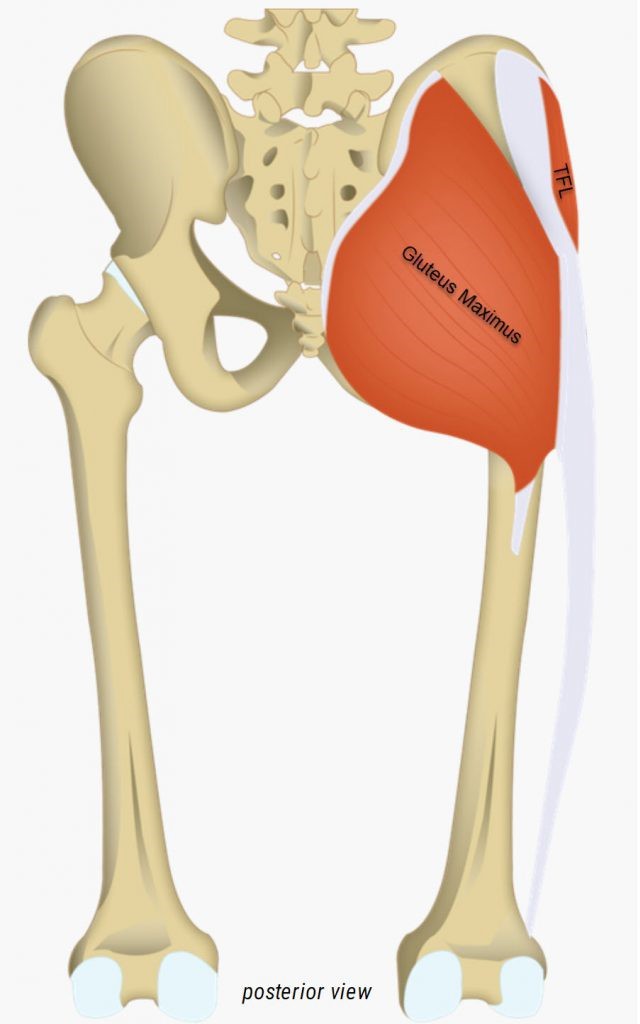The hip has many muscles acting upon it to produce its multiple movements: flexion, extension, medial & lateral rotation, abduction, adduction and circumduction. The muscles can be grouped by region: posterior, anterior, and medial.
The posterior group is comprised of superficial and deep gluteal muscles and the hamstrings trio. Gluteus maximus superficially covers all other gluteal muscles and has a broad attachment into the iliotibial band from the ilium, sacrum and sacrospinous ligament. Its main functions are to extend the hip and laterally rotate.

The hamstrings, comprised of biceps femoris, semitendinosus and semimebranosus also help to extend the hip.
Gluteus medius & minimus extend from the posterior surface of the ilium to the greater trochanter of the femur. These muscles, along with the tensor fascia lata, abduct and medially rotate the hip. The mneumonic rhyme used is often: “TFL, gluteus med & min all abduct the hip and rotate in!”
There are 6 deep muscles in the gluteal region which all have the main action to laterally rotate the hip. These are, from superior to inferior: piriformis, gemellus superior, obturator internus, gemellus inferior, obturator externus, and quadratus femoris.
Anteriorly, the muscles act on the hip to produce flexion, and include the iliopsoas, rectus femoris, sartorius and pectineus. Medially, muscles producing hip adduction include adductor brevis, longus, magnus, pectineus, and gracilis
